Flying Monsters Of Scorpius | Yuriy Toropin
Flying Monsters of Scorpius | Yuriy Toropin
More Posts from Xyhor-astronomy and Others
Oldest recorded solar eclipse helps date the Egyptian pharaohs

UNIVERSITY OF CAMBRIDGE—Researchers have pinpointed the date of what could be the oldest solar eclipse yet recorded. The event, which occurred on 30 October 1207 BC, is mentioned in the Bible, and could have consequences for the chronology of the ancient world.
Using a combination of the biblical text and an ancient Egyptian text, the researchers were then able to refine the dates of the Egyptian pharaohs, in particular the dates of the reign of Ramesses the Great. The results are published in the Royal Astronomical Society journal Astronomy & Geophysics.
The biblical text in question comes from the Old Testament book of Joshua and has puzzled biblical scholars for centuries. It records that after Joshua led the people of Israel into Canaan - a region of the ancient Near East that covered modern-day Israel and Palestine - he prayed: “Sun, stand still at Gibeon, and Moon, in the Valley of Aijalon. And the Sun stood still, and the Moon stopped, until the nation took vengeance on their enemies.” Read more.









5 Questions You Were Too Embarrassed To Ask About The Expanding Universe
“5.) Are there galaxies moving away faster than the speed of light, and isn’t that forbidden? From our point of view, the space in between us and any distant point is expanding. The farther away something is, the faster it appears to recede from us. Even if the expansion rate were tiny, an object far enough away would eventually cross that threshold of any finite speed, since an expansion rate (a speed-per-distance) multiplied by a great enough distance will give you a speed as fast as you want. But this is okay in General Relativity! The law that nothing can travel faster than the speed of light only applies to an object’s motion through space, not to the expansion of space itself. In reality, the galaxies themselves only move around at speeds that are hundreds or thousands of km/s, much lower than the 300,000 km/s speed limit set by the speed of light. It’s the expansion of the Universe that causes this recession and the redshift, not a true galactic motion.”
The idea that the spatial fabric of the Universe itself is expanding, and that’s what’s behind the observed relationship between redshift and distance has long been controversial, and also long-misunderstood. After all, if more distant objects appear to recede more quickly, couldn’t there be a different explanation, like an explosion that flung many things outward? As it turns out, this isn’t a mere difference in interpretation, there are observations we can make that tell us the answer! The Universe is not expanding ‘into’ anything, despite what your intuition might tell you. The Hubble ‘constant’ isn’t actually a constant, but is rather decreasing as time goes on. The Universe looks like it’s going to expand forever, but even that scientific conclusion is subject to revision depending on what data shows in the future. And although 97% of the galaxies in the Universe are already unreachable, it isn’t a violation of relativity or a faster-than-light phenomenon that’s to blame.
Come learn the answers to five questions about the expanding Universe that many are too embarrassed to ask!
Take in the Surreal Beauty of Jupiter in These Incredible New Images NASA released the raw data earlier this week, allowing the public to process the beautiful images










Dunes, peaks and craters on Mars obtained by HiRISE (High Resolution Imaging Science Experiment), a camera on board the Mars Reconnaissance Orbiter.
Image credit: NASA/JPL/University of Arizona

2017 October 30
Orionid Meteors from Orion Image Credit & Copyright: Lu Shupei
Explanation: Meteors have been shooting out from the constellation of Orion. This was expected, as October is the time of year for the Orionids Meteor Shower. Pictured here, over a dozen meteors were caught in successively added exposures last weekend over Wulan Hada volcano in Inner Mongolia, China. The featured image shows multiple meteor streaks that can all be connected to a single small region on the sky called the radiant, here visible just above and to the left of the belt of Orion, The Orionids meteors started as sand sized bits expelled from Comet Halley during one of its trips to the inner Solar System. Comet Halley is actually responsible for two known meteor showers, the other known as the Eta Aquarids and visible every May. Next month, the Leonids Meteor Shower from Comet Tempel-Tuttle should also result in some bright meteor streaks.
∞ Source: apod.nasa.gov/apod/ap171030.html
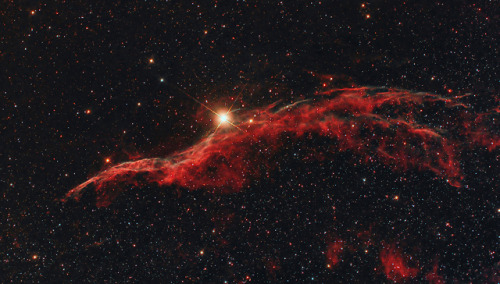
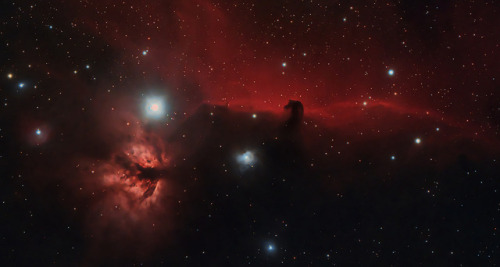
NGC 6960 (Western Veil nebula) & Horsehead Nebula and the Flame Nebula
by David Wills

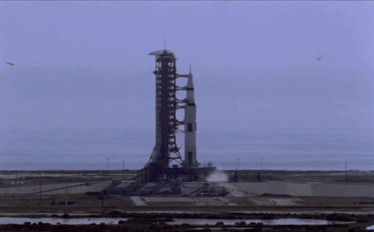
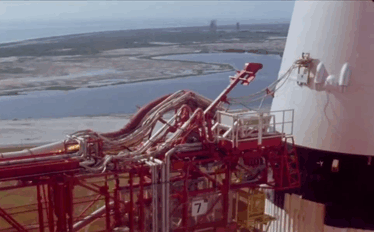
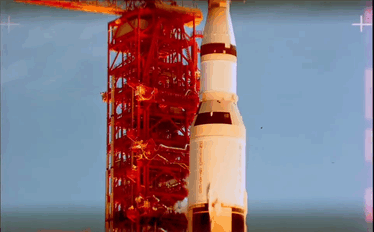
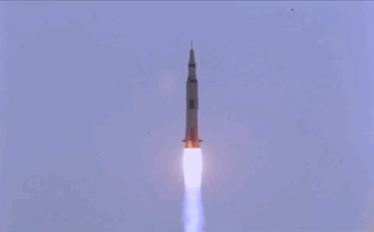
Apollo 11 Launch
How to Discover a Planet: A short step-by-step guide on how each of our planetary neighbors were originally discovered.
Solar System: 10 Things to Know This Week
Even the most ambitious plans start with a drawing. Visualizing a distant destination or an ambitious dream is the first step to getting there. For decades, artists working on NASA projects have produced beautiful images that stimulated the imaginations of the people working to make them a reality.

Some of them offered visualizations of spacecraft that had not yet been built; others imagined what it might look like to stand on planets that had not yet been explored. This week, we look at 10 pieces of conceptual art for our missions before they were launched–along with actual photos taken when those missions arrived at their destinations.
1. Apollo at the Moon

In 1968, an artist with our contractor North American Rockwell illustrated a phase of the Apollo lunar missions, showing the Command and Service Modules over the surface of the Moon. In 1971, an astronaut aboard the Lunar Module during Apollo 15 captured a similar scene in person with a camera.
2. Ready for Landing

This artist’s concept depicts an Apollo Lunar Module firing its descent engine above the lunar surface. At right, a photo from Apollo 12 in 1969 showing the Lunar Module Intrepid, taken by Command Module Pilot Richard Gordon.
3. Man and Machine on the Moon

Carlos Lopez, an artist with Hughes Aircraft Company, created a preview of a Surveyor spacecraft landing for our Jet Propulsion Laboratory in the early 1960s. The robotic Surveyor missions soft landed on the Moon, collecting data and images of the surface in order to ensure a safe arrival for Apollo astronauts a few years later. In the image at right, Apollo 12 astronaut Alan Bean examines the Surveyor 3 spacecraft during his second excursion on the Moon in November 1969.
4. O Pioneer!

In missions that lived up to their names, we sent the Pioneer 10 and 11 spacecraft to perform the first up-close exploration of the outer solar system. At left, an artist’s imagining of Pioneer passing Jupiter. At right, Pioneer 11’s real view of the king of planets taken in 1974.
5. The Grand Tour

An even more ambitious pair of robotic deep space adventurers followed the Pioneers. Voyager 1 and 2 both visited Jupiter and Saturn. Voyager 2 went on to Uranus and Neptune. Even the most visionary artists couldn’t imagine the exotic and beautiful vistas that the Voyager spacecraft witnessed. These images were taken between 1979 and 1989.
6. Journey to a Giant

Our Cassini spacecraft carried a passenger to the Saturn system: the European Space Agency’s Huygens probe. Huygens was designed to land on Saturn’s planet-sized moon Titan. At left is an artist’s view of Cassini sending the Huygens probe on its way toward Titan, and at right are some actual images of the giant moon from Cassini’s cameras.
7. Titan Unveiled

On Jan. 14, 2005, the Huygens probe descended through Titan’s thick haze and revealed what Titan’s surface looks like for the first time in history. Before the landing, an artist imagined the landscape (left). During the descent, Huygens’ imagers captured the actual view at four different altitudes (center)—look for the channels formed by rivers of liquid hyrdocarbons. Finally, the probe came to rest on a pebble-strewn plain (right).
8. Hazy Skies over Pluto

David Seal rendered this imaginary view from the surface of Pluto, and in the sky above, an early version of the spacecraft that came to be known as our New Horizons. At the time, Pluto was already suspected of having a thin atmosphere. That turned out be true, as seen in this dramatic backlit view of Pluto’s hazy, mountainous horizon captured by one of New Horizons’ cameras in 2015.
9. Dreams on Mars, Wheels on Mars

Long before it landed in Gale Crater, our Curiosity rover was the subject of several artistic imaginings during the years the mission was in development. Now that Curiosity is actually rolling through the Martian desert, it occasionally stops to take a self-portrait with the camera at the end of its robotic arm, which it uses like a selfie stick.
10. The World, Ceres

No one knew exactly what the dwarf planet Ceres, the largest body in the asteroid belt, looked like until our Dawn mission got there. Dawn saw a heavily cratered world—with a few surprises, such as the famous bright spots in Occator crater.

There’s more to come. Today we have carefully created artist impressions of several unexplored destinations in the solar system, including the asteroids Psyche and Bennu, and an object one billion miles past Pluto that’s now called 2014 MU69.

You can help nickname this object (or objects—there may be two) by submitting your names by Dec. 1. Our New Horizons spacecraft will fly past MU69 on New Year’s Day 2019.
Soon, we’ll once again see how nature compares to our imaginations. It’s almost always stranger and more beautiful than we thought.
Make sure to follow us on Tumblr for your regular dose of space: http://nasa.tumblr.com.
The NASA Village
Today in the NASA Village… Making More with Less

Stacey Boland works at NASA’s Jet Propulsion Laboratory (JPL) on missions that use remote sensing instruments for Earth observation. From space, we can learn so much about our changing environment here on Earth.
Maximizing science research requires finding creative and cost effective ways to do it! Her team developed the ISS-RapidScat instrument using left over equipment NASA had in storage from a program launched in the 1990’s. ISS-RapidScat is an external payload mounted to the outside of the Columbus module, part of the International Space Station. ISS-RapidScat measures ocean wind speed and direction to help track tropical cyclones and hurricanes. Stacey’s team was able to get a functioning piece of hardware for about a tenth the cost of a traditional “small” Earth science mission.
Stacey said, “It wasn’t easy, but it was worth it! Working in the space program doesn’t require perfection - but it does require passion and hard work! We work as a team here at NASA and everyone’s role is important. We rely on each other to do our best, regardless of what part of the mission is “ours.” All the parts need to work together for it to be a success and that takes teamwork and good communication!”
Stacey’s story represents how being creative in the NASA Village can really make a difference!

Where did Stacey get her hunger for space? “When I was growing up, my dad and I would learn about each shuttle mission and then watch launches on TV together. It was fun learning about science and exploration together. Now, as a parent, I’m continuing on that tradition with my son”
“I was able to watch the SpaceX-4 launch in person with my mom, dad, husband, and son”, Stacy said. “It was absolutely incredible to share that experience with them. My son still talks about it and has been practicing drawing rockets ever since. He often asks when we can go back to Florida to see another one!”
Experiencing a rocket launch in person is amazing. Feeling the sound waves from the engines push against your body is quite a rush. And when it is hardware you helped create, on its way into space, it makes that experience even more special.
Next time on the NASA Village… A visit to the NASA Village inspires a lifelong career.
Do you want more stories? Find our NASA Villagers here!
-
 everydaysisthesameasalways liked this · 2 years ago
everydaysisthesameasalways liked this · 2 years ago -
 sleeptoescape liked this · 4 years ago
sleeptoescape liked this · 4 years ago -
 illusionvsreality liked this · 4 years ago
illusionvsreality liked this · 4 years ago -
 khalisno reblogged this · 4 years ago
khalisno reblogged this · 4 years ago -
 devilishkw liked this · 4 years ago
devilishkw liked this · 4 years ago -
 infiniteproxy reblogged this · 4 years ago
infiniteproxy reblogged this · 4 years ago -
 vanessa-az reblogged this · 5 years ago
vanessa-az reblogged this · 5 years ago -
 aimlessme reblogged this · 5 years ago
aimlessme reblogged this · 5 years ago -
 iris-rainbowflower reblogged this · 5 years ago
iris-rainbowflower reblogged this · 5 years ago -
 clockworkfairy liked this · 5 years ago
clockworkfairy liked this · 5 years ago -
 ohfallingstar reblogged this · 5 years ago
ohfallingstar reblogged this · 5 years ago -
 vanessa-az liked this · 5 years ago
vanessa-az liked this · 5 years ago -
 deepspacelove liked this · 5 years ago
deepspacelove liked this · 5 years ago -
 everyglanceyoushotme reblogged this · 5 years ago
everyglanceyoushotme reblogged this · 5 years ago -
 everyglanceyoushotme liked this · 5 years ago
everyglanceyoushotme liked this · 5 years ago -
 valuevillainy reblogged this · 5 years ago
valuevillainy reblogged this · 5 years ago -
 valuevillainy liked this · 5 years ago
valuevillainy liked this · 5 years ago -
 halosydne reblogged this · 5 years ago
halosydne reblogged this · 5 years ago -
 laissez--faire reblogged this · 5 years ago
laissez--faire reblogged this · 5 years ago -
 mariaceballosrossi reblogged this · 5 years ago
mariaceballosrossi reblogged this · 5 years ago -
 justsparklingfury liked this · 5 years ago
justsparklingfury liked this · 5 years ago -
 obe reblogged this · 5 years ago
obe reblogged this · 5 years ago -
 juniperajar liked this · 5 years ago
juniperajar liked this · 5 years ago -
 clytemnestra7777 reblogged this · 5 years ago
clytemnestra7777 reblogged this · 5 years ago -
 taddodo liked this · 5 years ago
taddodo liked this · 5 years ago -
 ethereal-icarus liked this · 5 years ago
ethereal-icarus liked this · 5 years ago -
 lord-of-the-avengers liked this · 5 years ago
lord-of-the-avengers liked this · 5 years ago -
 entitydark reblogged this · 5 years ago
entitydark reblogged this · 5 years ago -
 entitydark liked this · 5 years ago
entitydark liked this · 5 years ago -
 nightmare3614 reblogged this · 5 years ago
nightmare3614 reblogged this · 5 years ago -
 nightmare3614 liked this · 5 years ago
nightmare3614 liked this · 5 years ago -
 angaldan reblogged this · 5 years ago
angaldan reblogged this · 5 years ago -
 trustcaptainplanet reblogged this · 5 years ago
trustcaptainplanet reblogged this · 5 years ago -
 classicallyforbiddenregions reblogged this · 5 years ago
classicallyforbiddenregions reblogged this · 5 years ago -
 samysx-blog liked this · 5 years ago
samysx-blog liked this · 5 years ago
For more content, Click Here and experience this XYHor in its entirety!Space...the Final Frontier. Let's boldly go where few have gone before with XYHor: Space: Astronomy & Spacefaring: the collection of the latest finds and science behind exploring our solar system, how we'll get there and what we need to be prepared for!
128 posts